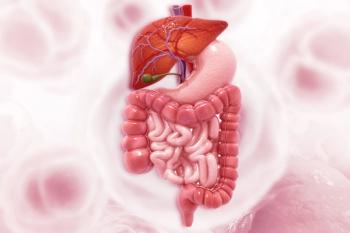
UroCAD Outperforms Urine Cytology in Detecting Urothelial Carcinoma
This study suggested that the customized bioinformatics workflow, UroCAD, be used as a noninvasive approach for diagnosis and recurrence surveillance in patients with urothelial carcinoma prior to the use of cystoscopy.
A study of a customized bioinformatics workflow, titled Urine Exfoliated Cells Copy Number Aberration Detector (UroCAD), indicated that the tool has the potential to be a robust urothelial carcinoma diagnostic method with improved sensitivity and similar specificity when compared with cytology tests.1
The results of the study, published in Clinical Cancer Research, also suggested that UroCAD be used as a noninvasive approach for diagnosis and recurrence surveillance in patients with urothelial carcinoma prior to the use of cystoscopy, thus largely reducing the burden on patients.
“Urine cytology, which is widely used to screen for bladder cancer, has high specificity but lacks sensitivity, especially for low-grade cancers,” study author Chuan-Liang Xu, MD, PhD, a urologist at Changhai Hospital in Shagnhai, said in a press release.2
“Cystoscopy, while more accurate than cytology, is an invasive procedure with added costs and potential complications for the patient,” Xu added. “Therefore, an inexpensive, non-invasive test for the detection and monitoring of bladder cancer is an unmet clinical need.”
To investigate the use of UroCAD, researchers prospectively recruited patients with urothelial carcinomas and nontumor controls from clinical trial NCT03998371, which is an observational trial conducted in Shanghai. Urine-exfoliated cell DNA was assessed using Illumina HiSeq XTen, followed by genotyping with UroCAD.
In the discovery phase, researchers analyzed urine from 126 patients with urothelial carcinoma and 64 nontumor disease samples. Compared with nontumor controls, frequent chromosome copy-number changes were found in patients with tumor. Notably, UroCAD was built by incorporating all of the autosomal chromosomal changes.
UroCAD reached performance of AUC = 0.92 (95% CI, 89.4%-97.3%). As of the optimal cutoff (|Z| ≥ 3.21), the sensitivity, specificity, and accuracy were 82.5%, 96.9%, and 89.0%, respectively. Moreover, the prediction positivity was found to be associated with tumor grade (P = .01).
In an external validation cohort of 95 participants, the UroCAD assay was able to identify urothelial carcinoma with an overall sensitivity of 80.4%, specificity of 94.9%, and AUC of 0.91. Further, the UroCAD assay was able to outperform cytology tests with significantly improved sensitivity (80.4% vs 33.9%; P < .001) and comparable specificity (94.9% vs 100%; P = .49).
“The relatively lower sensitivity of UroCAD for the detection of lower grade or smaller tumors is not unexpected, as these tumors are less likely to have abundant chromosomal alterations,” Xu explained. “Ultimately, we believe that our assay could help to reduce the frequency of cystoscopy examination, but not to replace it.”
According to the investigators, this study had several limitations, including that UroCAD positivity was found to be associated with microscopic epithelial cells in patients with tumor; this suggests that a lack of sufficient exfoliative cell may be a major technique limitation. Additionally, multiple regression analyses demonstrated that tumor grade was the other parameter correlated with UroCAD positivity, which may explain why the UroCAD showed lower sensitivity in low-grade tumors than that of high-grade tumors.
“For patients with hematuria or who have suspected urothelial carcinoma, UroCAD is a promising way to replace cytology and to reduce repeated cystoscopy examinations,” Jia-Tao Ji, MD, PhD, a urologist at Shanghai Hudong Hospital, said in the release.
Of note, the researchers indicated that further clinical trial research to investigate the value of the UroCAD assy in the surveillance of urothelial carcinomas is already under way (NCT04432909).
References:
1. Zeng S, Ying Y, Xing N, et al. Noninvasive Detection of Urothelial Carcinoma by Cost-effective Low-coverage Whole-genome Sequencing from Urine-Exfoliated Cell DNA. Clinical Cancer Research. doi: 10.1158/1078-0432.CCR-20-0401
2. Urine-based Liquid Biopsy Test Outperforms Urine Cytology in Detecting Bladder Cancer [news release]. Published October 9, 2020. Accessed October 9, 2020.
Newsletter
Stay up to date on recent advances in the multidisciplinary approach to cancer.


















































































